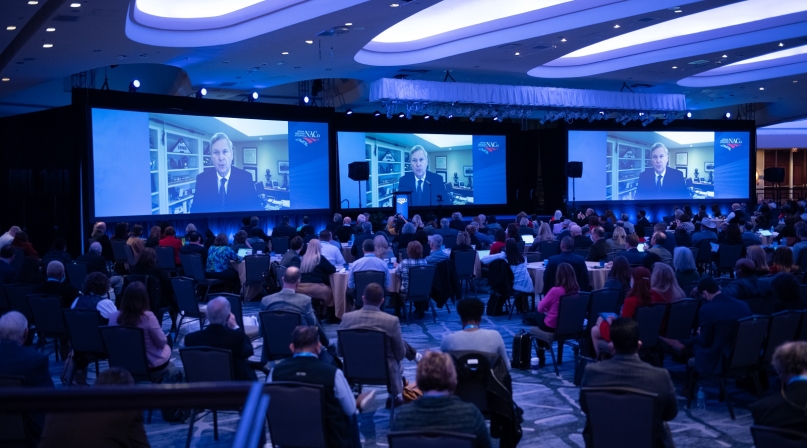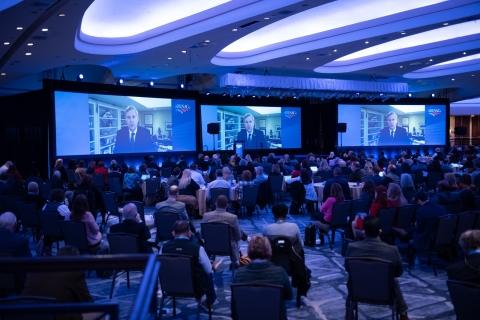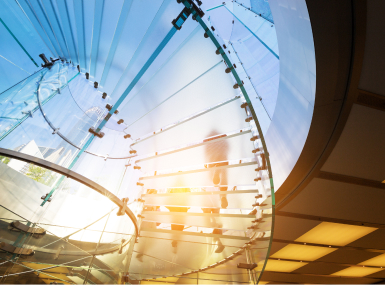USDA seeks to grow circular economy in rural areas

Key Takeaways
Making a dent in rural poverty will mean making sure extraction industries make less of a dent in the land and new industries start building there.
When minerals and natural resources leave, they also take away some of an area’s prosperity, and Secretary of Agriculture Tom Vilsack, in his second stint in the position, wants to see that change.
“At the U.S. Department of Agriculture, we’re looking for ways to develop what is called a ‘circular economy,’ in which wealth and new opportunities and jobs are created in rural communities and stay in those rural communities,” he told the General Session audience Feb. 14. “An extraction economy is one that essentially takes things from the land and off the land, but rather than converting them into valuable and rural communities, that value is transported elsewhere and so too are the opportunities and jobs.”
“We're focused on incentivizing and encouraging the circular economy to be the more prevalent economy rule areas across the United States.”
That strategy could involve expanding processing capacity or embracing climate- smart agricultural practices, both of which could grow the employment base in rural areas.
USDA will coordinate partnerships with between 25 to 30 communities in eight to 10 states, tribes and territories, pairing them with federal staff dedicated to helping communities find the best programs to support their rural growth efforts.
“We can create a stronger pipeline between communities in need in federal programs to assist them,” Vilsack said.
The department has already announced plans to commit $1 billion of American Rescue Plan funding to expand independent meat processing capacity through loan guarantees. On top of that, a total of $375 million in grants will provide gap financing to jumpstart independent processing projects.
“Both workers and producers now will need to invest in workforce development components in order to build a pipeline of well-trained workers and support safe workplaces with fair wages,” Vilsack said. “All of that's involved in our effort to enhance processing.”
Vilsack also touted plans to bolster carbon sequestration efforts on working agricultural land, which could be lucrative for farmers.
“As we embrace climate smart agricultural practices, we open up a whole new vista of opportunity for farmers to be paid for carbon sequestration for things that they're already doing and we'll do in the future,” he said. “In a number of ways, USDA is also targeting our existing programs to focus on voluntary incentive-based climate solutions.”

Attachments
Related News

Senators introduce bipartisan UPGRADE Act to support small and rural public water systems
On December 15, Sens. Lisa Blunt Rochester (D-Del.) and Roger Wicker (R-Miss.) introduced the Unincorporated Partnerships for Grant Resources, Assistance, and Drinking Water Enhancements (UPGRADE) Act (S. 3465), a bipartisan bill that would strengthen federal support for small public water systems and helps unincorporated communities access clean and affordable water.

House reintroduces bipartisan legislation to level playing field for rural communities
House reintroduced the Rural Partnership and Prosperity Act, bipartisan legislation intended to advance economic development in rural counties and overcome barriers to obtaining federal funding and resources.

White House and U.S. Department of Agriculture announce $12 billion in aid to farmers
On December 8, President Trump and U.S. Secretary of Agriculture Brooke Rollins announced a $12 billion farm aid package to help farmers manage market disruptions and rising production costs.
